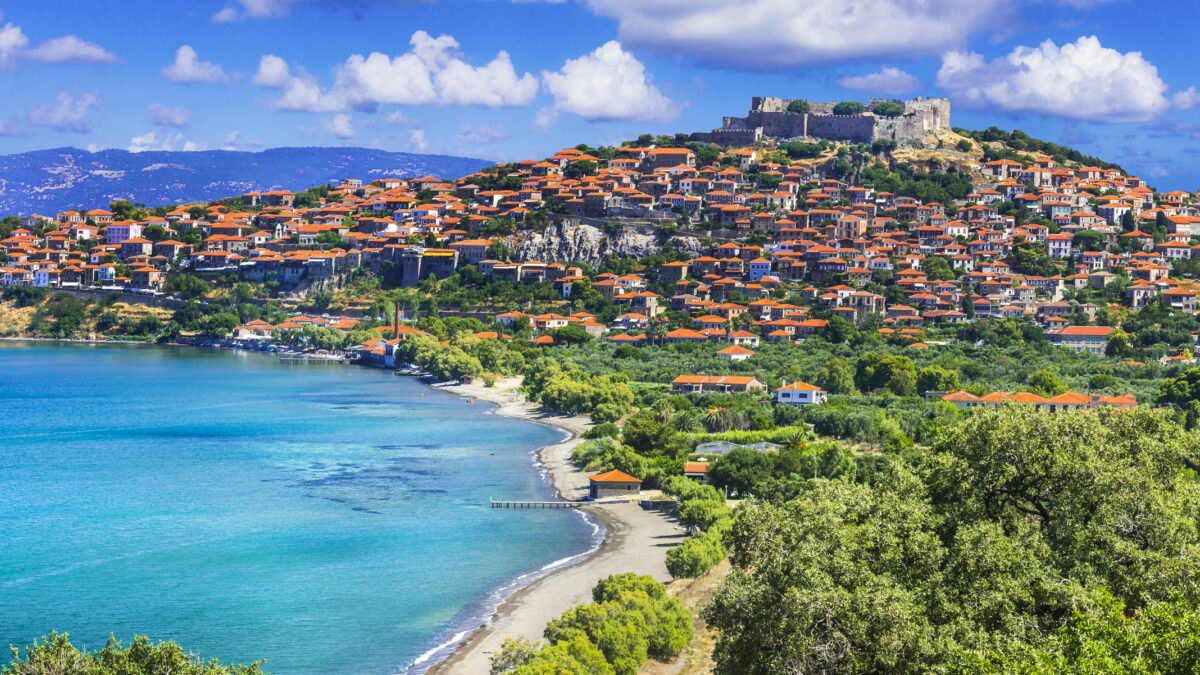Lesvos, with its capital Mytilini, is an island in the northeastern Aegean which belongs administratively to the Region of the North Aegean. It’s Greece’s third largest island, after Crete and Evia, and has the fifth-largest island population. Inhabited and developed since antiquity, the island exhibits unique and rich flora and fauna, striking natural beauty, famous sights to see, and, of course, a renowned cuisine. Lesvos traces its history back to ancient times. As a result, visitors to the island will encounter remains from antiquity, the Byzantine period, and the Ottoman period.
Lesvos is dotted with settlements, each of them unique. In addition to stately Mytilini, with its neoclassical architecture and urban feel, settlements such as medieval Molyvos, soap-producing Plomari, Sykamia – the birthplace of Myrivilis – Eressos by the seaside, and Mantamados with its religious aura all contribute to the island’s unique ambiance.
Over the centuries, Lesvos was the birthplace of many prominent figures in literature and other arts – a land where culture flourishes. From the poets Sappho and Alcaeus to the folk painter Theofilos, and the novelists Stratis Myrivilis and Ilias Venezis, just to name a few, the island has had no shortage of prominent natives. In fact, one of Greece’s two Nobel laureates, Odysseas Elytis, also hailed from the island, and the local airport is named for him.
Together with its intangible heritage, much of which is on display in the local (Archaeological, Byzantine, Teriade, etc.) Museums, Lesvos boasts abundant natural beauty. The island is covered in verdant forests of pine, chestnut, oak, fruit-bearing and olive trees on its eastern side, and has two characteristic bays – Kalloni and Gera. Meanwhile, the geological uniqueness and volcanism of its western side are well worth exploring. The ‘petrified forest’ at Sigri, one of four natural parks managed by the Natural History Museum of the Lesvos Petrified Forest, is arguably the most striking physical remnant of these natural processes. It is just part of an island that has been recognised as a UNESCO Geopark, due to the volcanic ash that blanketed it twenty million years ago, forming a singular image of ‘petrified’ nature.
Cuisine
Lesvos boasts an unmatched culinary tradition and culture, which makes the most of the island’s excellent local ingredients, whether from the land itself or fished from the sea. The first two words that naturally come to mind when describing the island’s cuisine are ouzo and oil. Lesvos is characterised by its extensive olive groves and its local spirit, both of which figure prominently in many recipes. Lesvos is known for the sardines caught in Kalloni bay, its salted goods, its flavourful ladotyri cheese, its chachles – a local spin on trahanas, shaped like little boats – and the sweet pies of Agiassos. Whether in its mezes for ouzo or in its main courses, the cuisine of Lesvos is truly multifaceted and intricate. And how could it be otherwise, with the island’s major livestock production, fertile land capable of growing all manner of vegetables and herbs, and rich coastal waters where quality fish, molluscs, and shellfish can be caught. Visitors to the island will have a truly stunning array of dishes to sample at any of the island’s traditional cafés, including stuffed zucchini blossoms fried or cooked in a pot, sougania (stuffed onions), scallops with pilaf, baked sfouggato, gkiouzlemedes (mini cheese pies), octopus fritters.
How to get there
Lesvos is an island in the Northeastern Aegean and is served by ferry from Piraeus and Kavala, with connections to other islands of the Northeastern Aegean and the Cyclades. In addition, the island is accessible by air from Athens.










